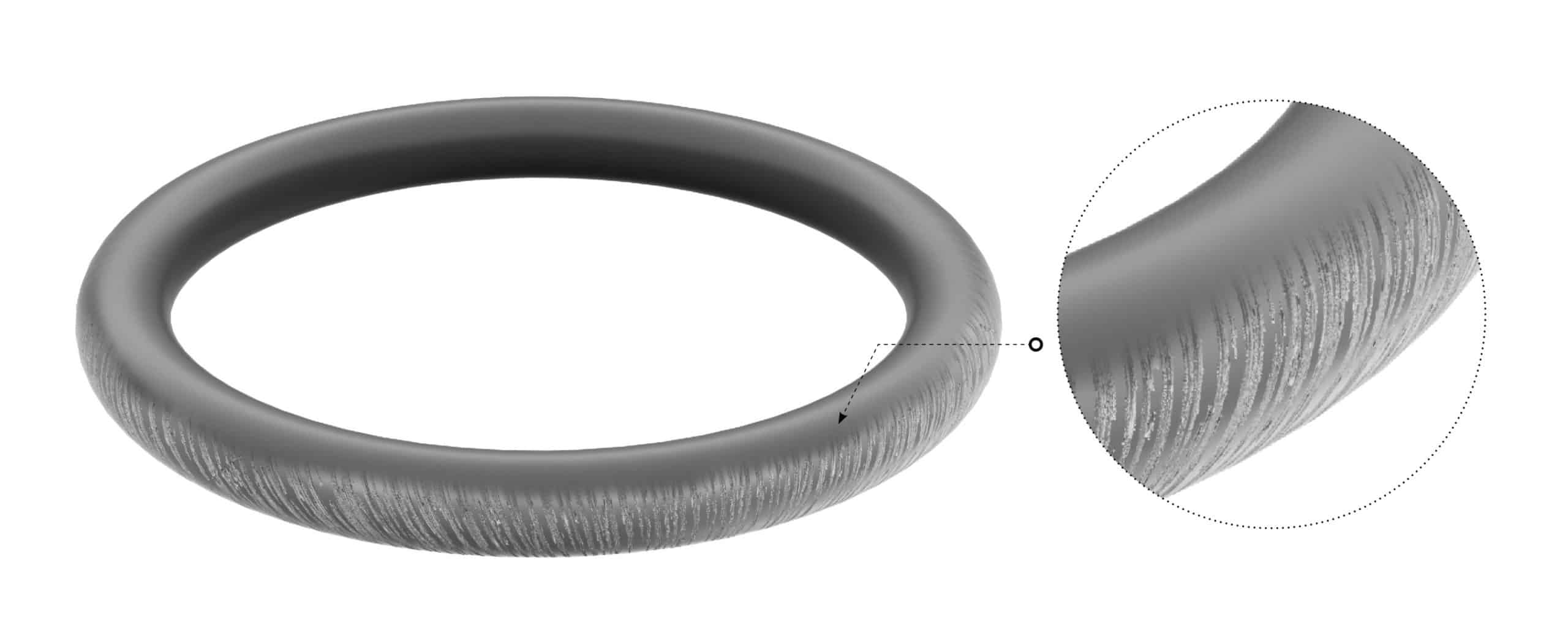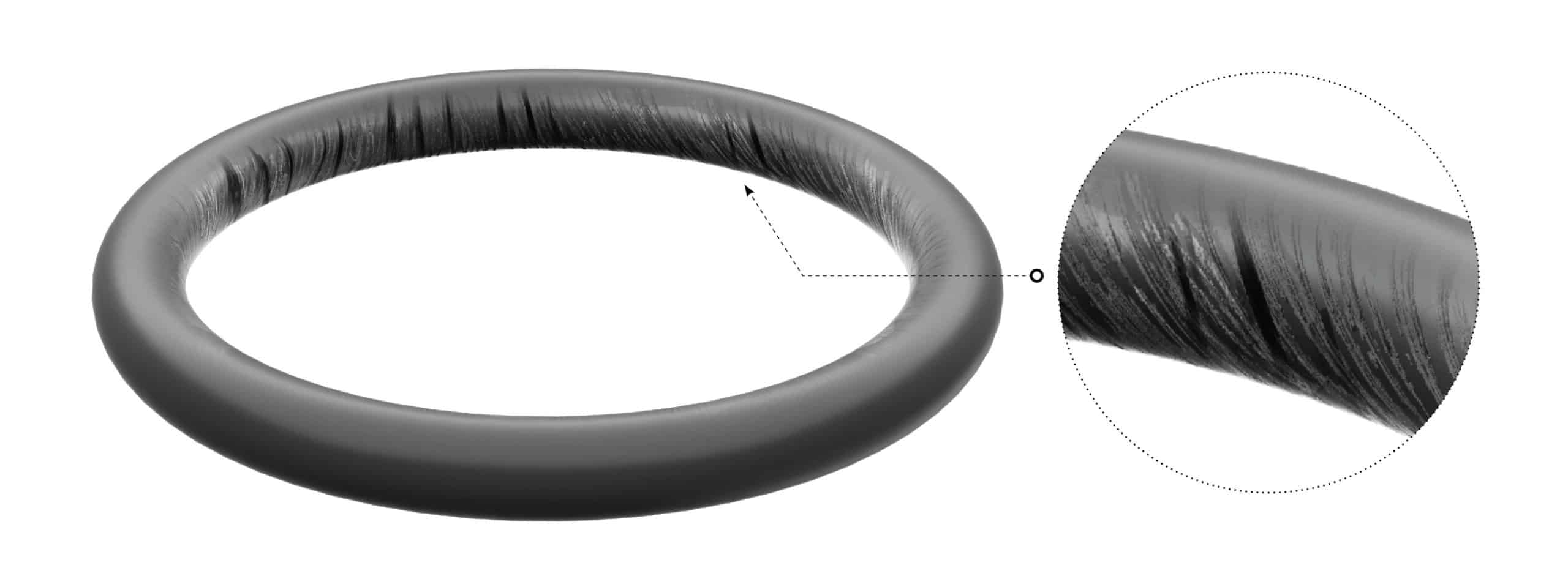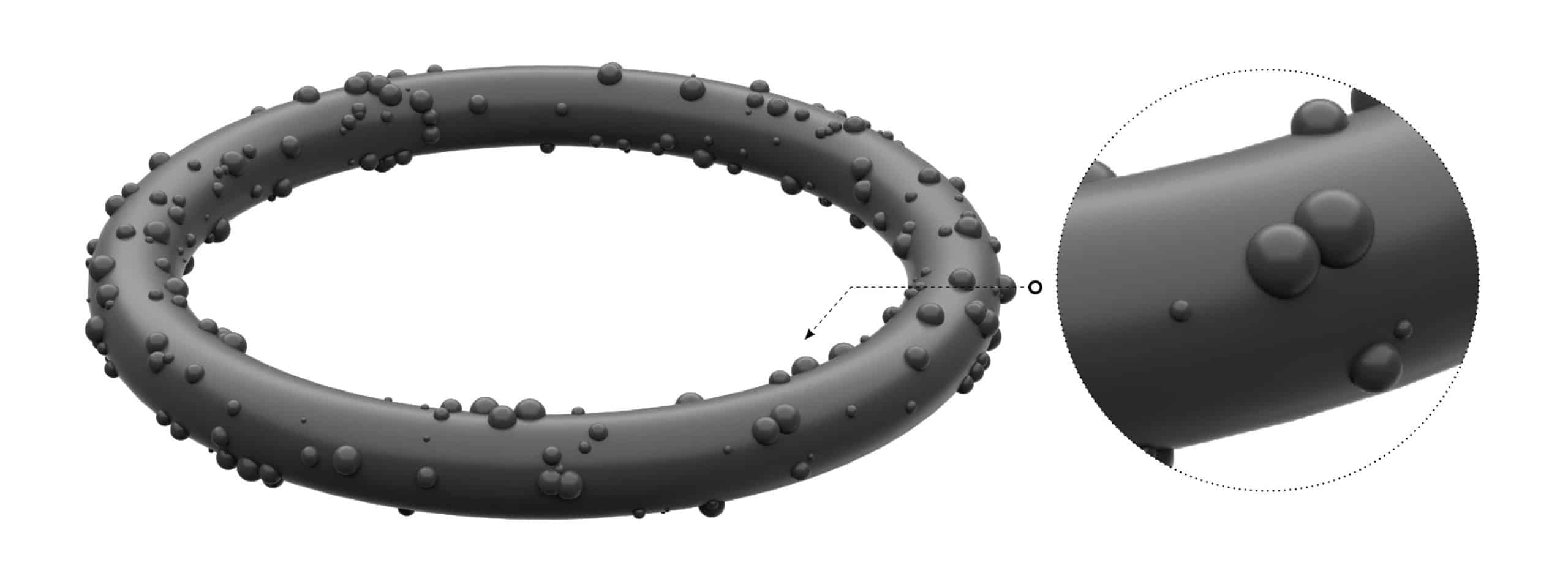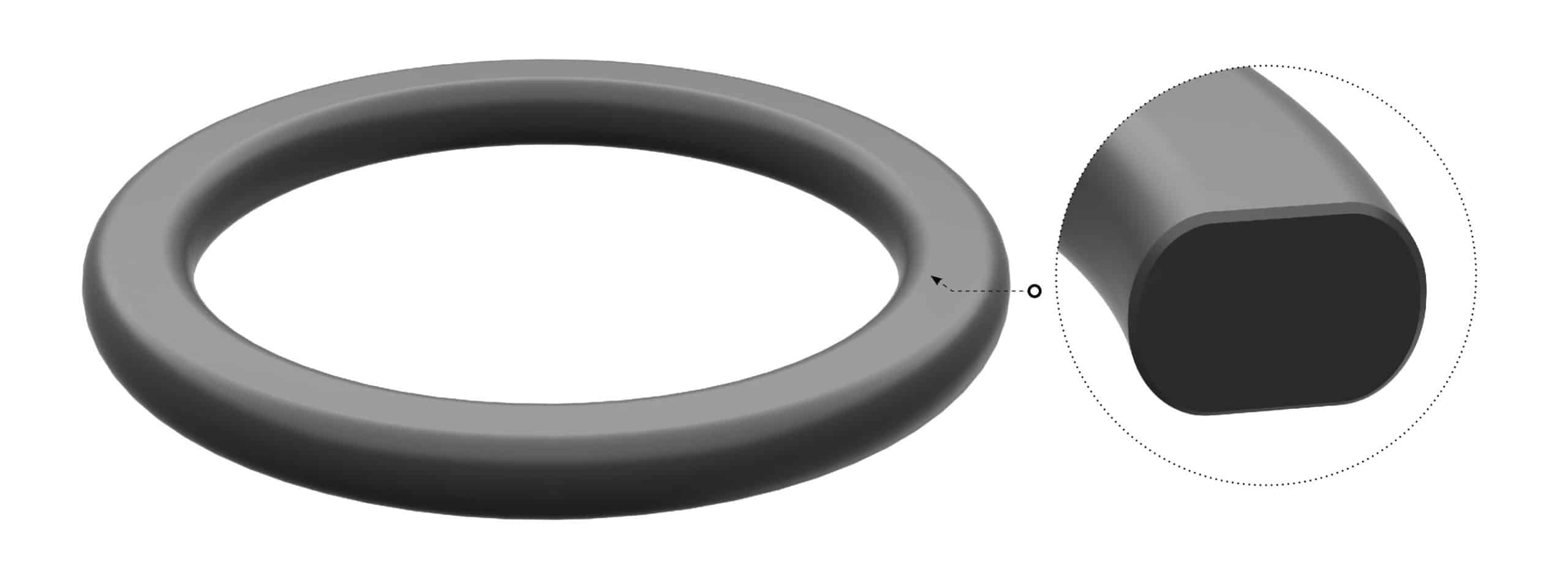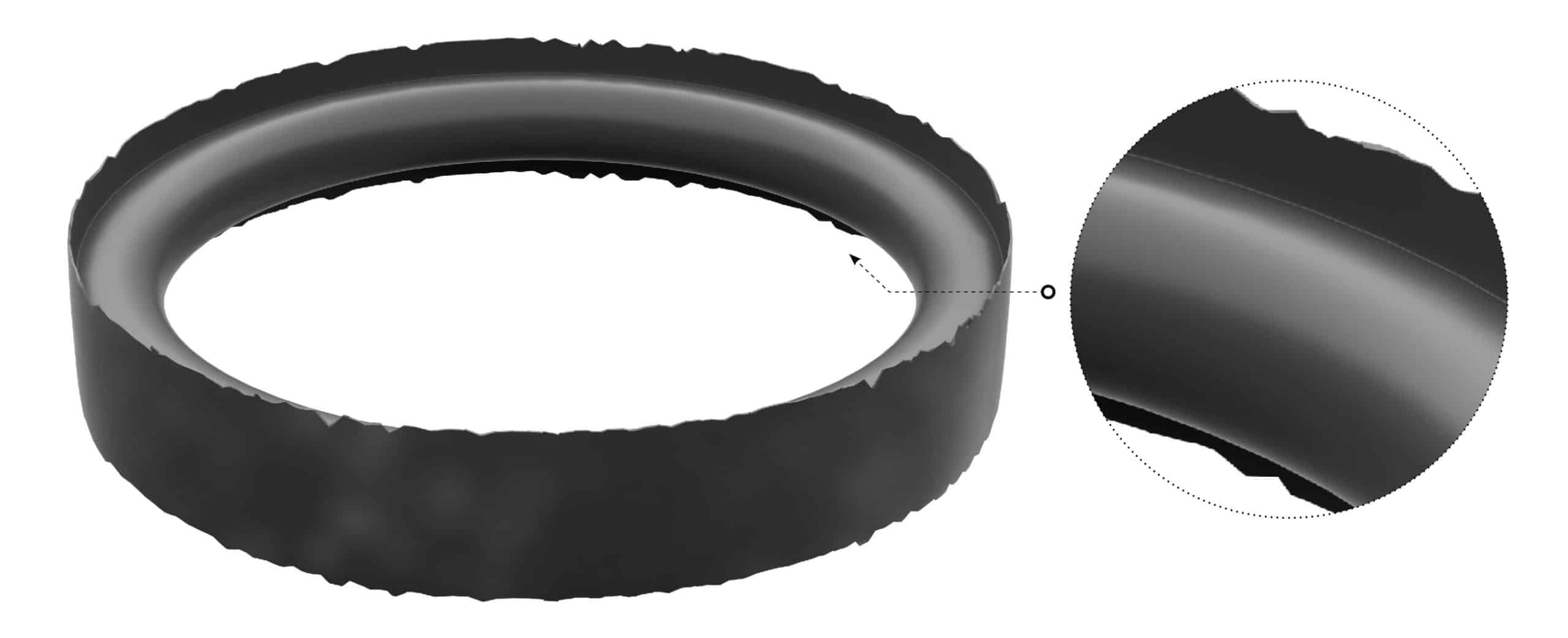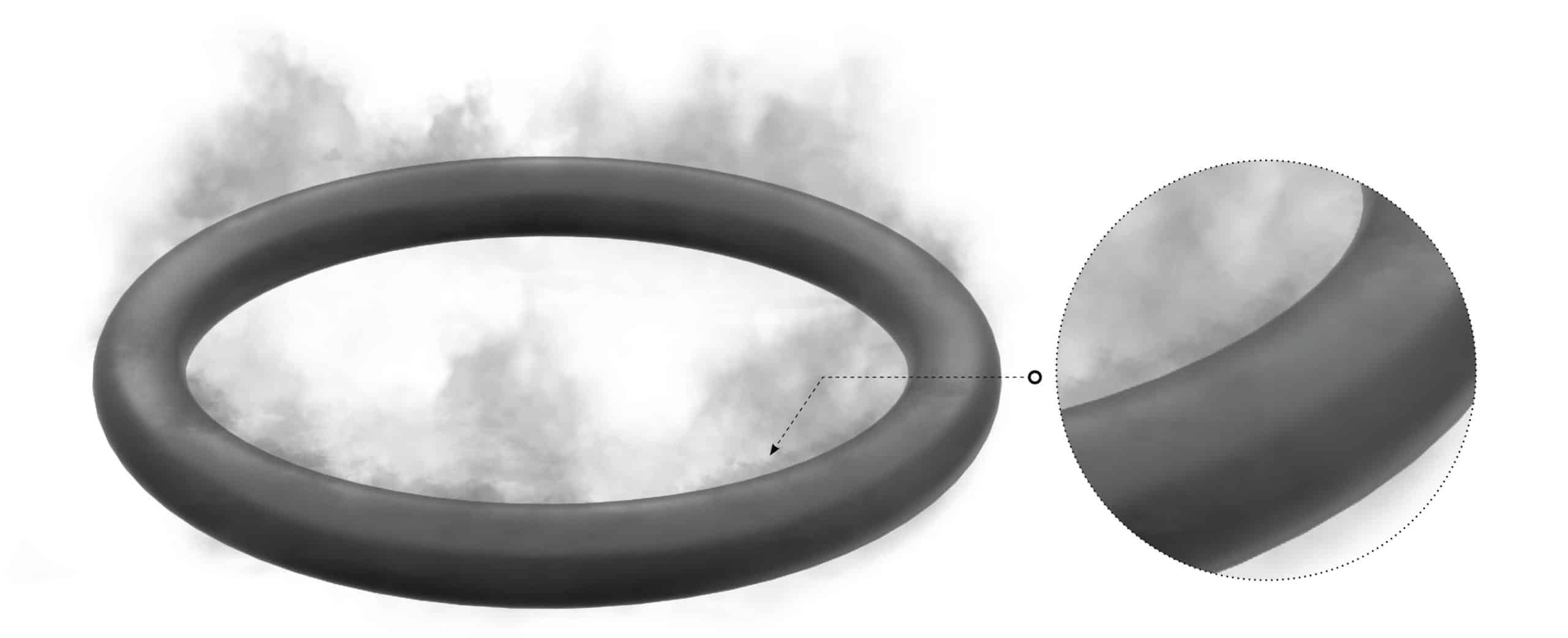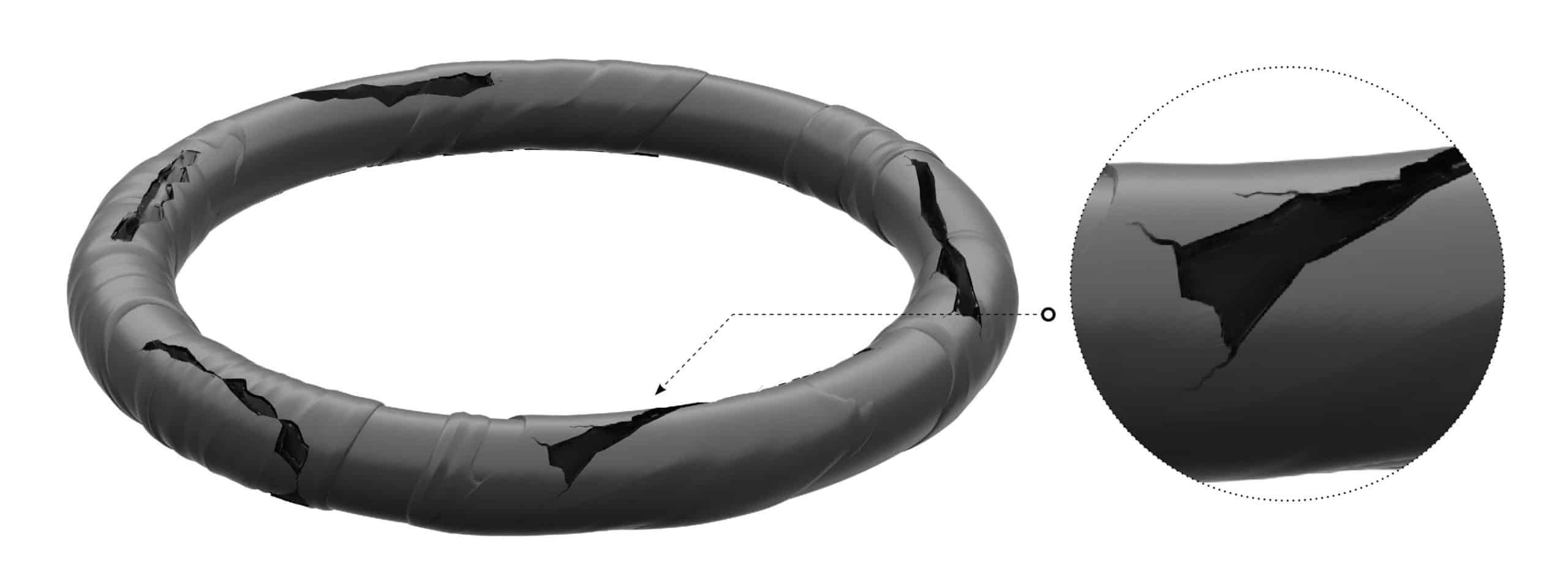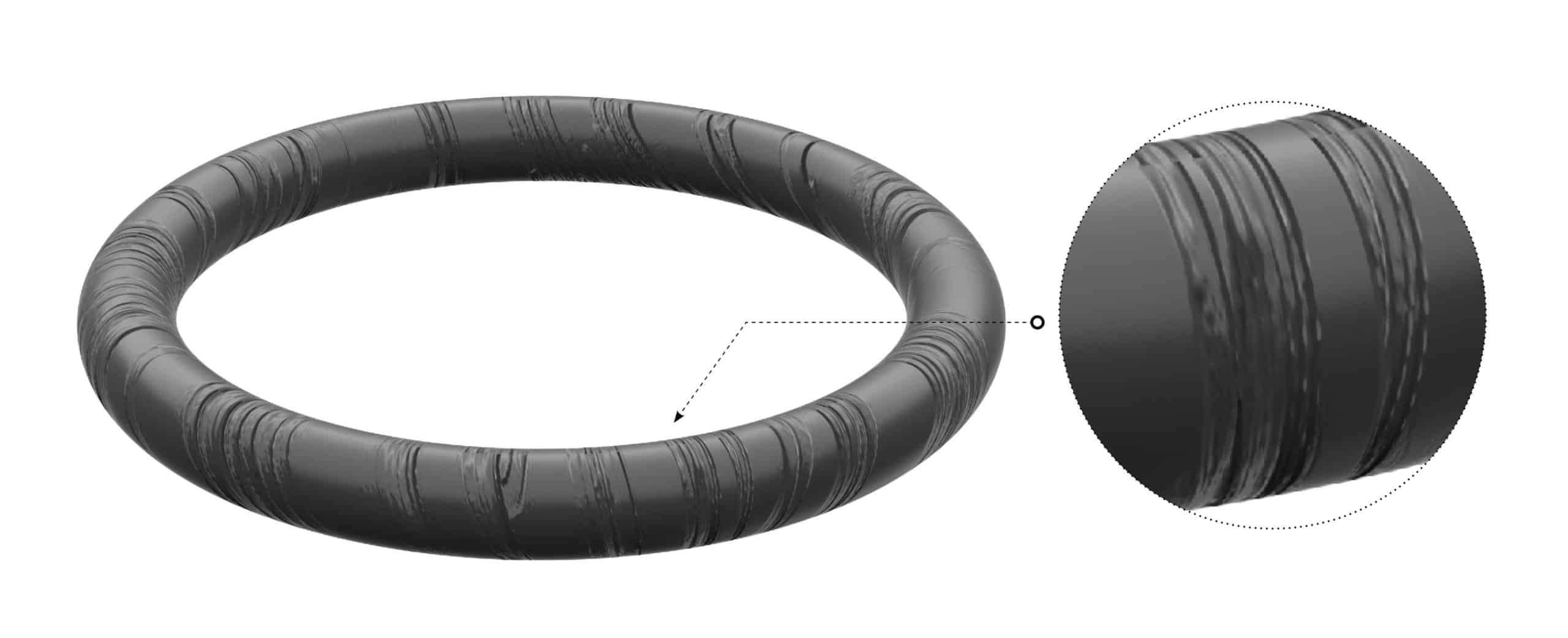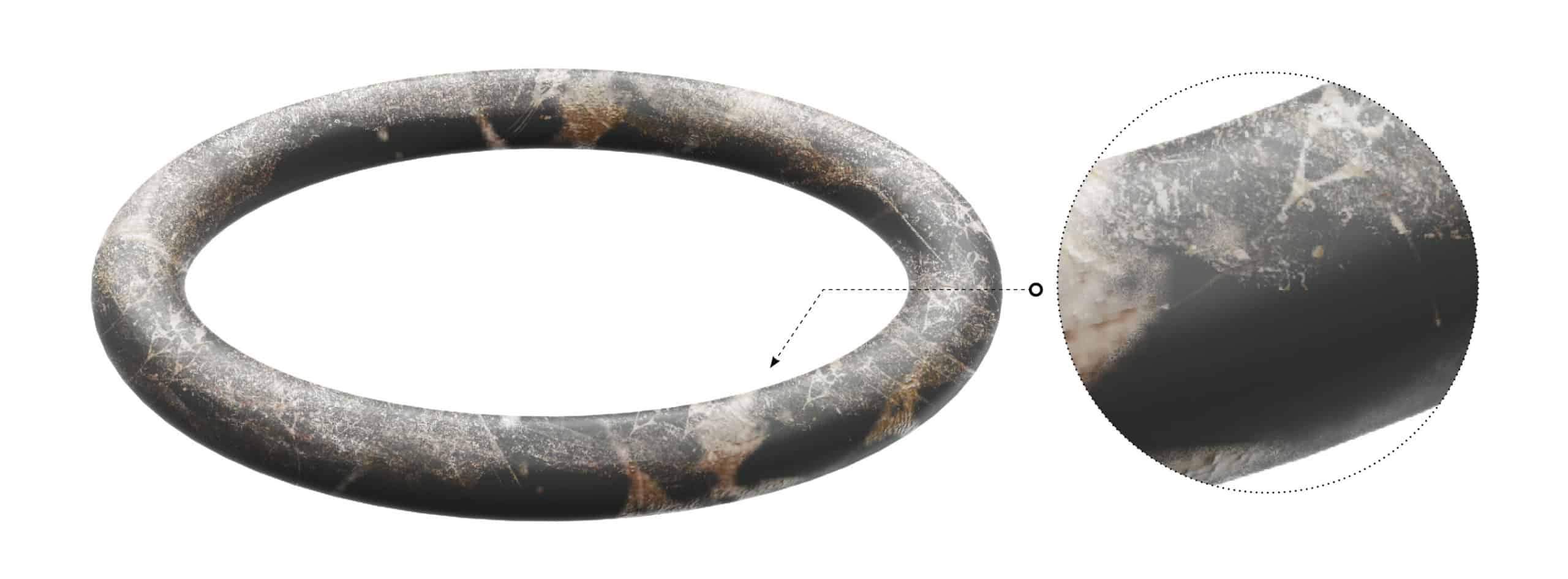Types of O-Ring Failure
An o-ring can fail for different reasons, whether it’s an improper compound selection or incompatibility with the o-ring groove design. By analyzing a failed o-ring and distinguishing the cause, one can make adjustments to the type of o-ring used and/or improve the equipment design to prevent sealing failure. Below, we break down what is most commonly seen on failed o-rings, what causes these o-rings to fail, and what changes can be implemented to prevent this failure from happening in the application. Click any of the following o-ring failure types to jump to their respective sections.
Abrasion
What’s Seen: The o-ring has a slightly cropped outer surface. Light scratches may be present with deep cuts and even breaking in some parts of the o-ring.
What Causes It: Dynamic environments are most common in showing abrasion on the o-ring. This is due to constant friction between the housing and the outer surface of the o-ring. A higher risk of abrasion may occur if there is an absence of lubrication on the o-ring when installed.
How To Prevent It: Ensuring the correct lubrication for the sealing system is important, Global O-Ring and Seal supplies O-Lube, Super O-Lube, and O-Ring Grease as a way to improve o-ring resistance to abrasion.
Chemical Degradation
What’s Seen: In relation to chemical exposure within the application, the o-ring may display multiple indicators such as cracks, stains, discoloration, or a difference in hardness.
What Causes It: Specific chemicals interact differently against certain o-ring materials. This may result in a harder material o-ring after use. Alternatively, the o-ring can reduce in hardness and strength which can soften the material and contort the o-ring from its initial form.
How To Prevent It: Selecting the correct o-ring material is crucial to ensure the seal can demonstrate resistance to chemicals within the application. Chemical degradation happens faster when temperatures are higher in conjunction with the o-ring being under excessive pressure. Using the Chemical Compatibility Interactive Tool, multiple chemicals can be selected to instantly display recommended o-ring materials.
Chemical Swelling
What’s Seen: Swelling and bubbling can either be seen throughout the entire o-ring or only in specific areas impacted by chemicals. That being stated, the o-ring may look bigger than its original form.
What Causes It: Chemical swelling in an o-ring happens when chemicals permeate through the seal. The increased seal volume can compromise the strength and sealing function of the o-ring.
How To Prevent It: Use a different o-ring material that is recommended for its resistance against the specific chemicals within the application. Using the Chemical Compatibility Interactive Tool, multiple chemicals can be selected to instantly display recommended o-ring materials.
Compression Set
What’s Seen: The surfaces of the o-ring cross-section have been leveled to conform to the groove. At this point, the o-ring cannot return to its circular cross-sectional shape.
What Causes It: At high temperatures, the o-ring elasticity can reduce and fail to return to its initial form. Stress, coupled with high temperatures, within the application can alter the cross-section shape from circular to more of a flat oval. Another cause is the o-ring groove being too tight.
How To Prevent It: Increasing to a higher durometer o-ring with a higher operating temperature can aid in preserving the function of the o-ring. The o-ring groove design should also be checked to ensure too much squeeze is not being applied to the o-ring. Additionally, implementing backup rings into your application can decrease the probability of the o-ring being pressed into that permanent oval shape.
Damage from Installation
What’s Seen: Precise notches on the outer edge of the o-ring surface caused by improper installation.
What Causes It: The o-ring has not been lubricated properly and/or has been installed in an application with sharp edges. Additionally, if the o-ring is too big or small to fit in its designated groove, this can cause skiving during installation.
How To Prevent It: Taping over edges can help avoid notching during installation. Also, Global O-Ring and Seal supplies sizing and lubrication accessories for o-rings to ensure the right size o-ring is put in place the right way to evade early installation damage.
Extrusion and Nibbling
What’s Seen: Nibbled or ruffled edges can be observed on the side of the o-ring receiving lower pressures.
What Causes It: The o-ring is pushed into a clearance gap in the event of high pressures. Pressure surges can bring about the opening and closing of the clearance gap. This pinches the o-ring within the mating surface edges, which causes the low-pressure end of the o-ring to extrude and appear ruffled when removed from the application.
How To Prevent It: Utilizing o-rings of a higher durometer is recommended. If using 70 durometer o-rings, consider increasing to 90 durometer (widely available in Nitrile and Viton®). Additionally, implementing backup rings into your application can decrease the probability of the o-ring being extruded through clearance gaps.
Outgassing
What’s Seen: In typical situations, the o-ring shows no observable difference. A slight reduction in size can be seen on rare occasions.
What Causes It: In a vacuum environment, molecules making up the o-ring are vaporized. This may impact vacuum effectiveness, as well as contaminate the environment.
How To Prevent It: It is important to verify which o-ring material is appropriate for the application. Check o-ring compound datasheets to evaluate temperature ranges and preferred environments for use for different materials. Certain elastomers are produced to prevent outgassing including Genuine Viton®, Silicone, PTFE, and FFKM.
Rapid Gas Decompression
What’s Seen: Cracks, blisters, and deep cuts may show throughout the o-ring surface. In the worst cases, o-rings are blown out entirely.
What Causes It: When o-rings are subjected to gas at high pressures and temperatures for an extended amount of time, the gas is taken in and contained within the elastomer. Once there is a quick decrease in pressure, the gas rushes out of the o-ring material to cause cracks and blisters.
How To Prevent It: It is recommended to utilize Rapid Gas Decompression (RGD) o-rings, which are available in Viton® 90 and 95 durometer.
Spiral Failure
What’s Seen: Deep, diagonal cuts show around the outer surface of the o-ring.
What Causes It: Twisting within a dynamic application and even as early as installation can cause spiraling marks on the o-ring. Within the dynamic application, spiraling can occur with high friction, absence of o-ring lubrication, or inconsistent surface.
How To Prevent It: Moving to a higher durometer o-ring can help avoid twisting within the application. An alternate solution is using x-rings (also known as quad rings), which are made to double the sealing surface and prevent spiral failure.
Thermal Degradation
What’s Seen: Rounded cracks along the o-ring surface.
What Causes It: The temperature within the environment has surpassed the temperature range of the o-ring. Higher heat can elevate hardness and reduce elasticity, thus causing visible cracks in the stiffened elastomer.
How To Prevent It: Verify the temperature range of the o-ring compound before use within the application. Evaluate spec sheets for o-ring compounds to confirm temperature ranges for different materials, as well as preferred and non-preferred environments for use.
Thermal Extrusion
What’s Seen: Nibbled or ruffled edges can be observed on the o-ring surface. If also in a high-pressure environment, extrusion may show prevalence on the side of the o-ring receiving lower pressure.
What Causes It: Higher temperatures (than what the o-ring is designed to withstand) can cause the o-ring to extrude and fill into clearance gaps.
How To Prevent It: The o-ring groove design should also be evaluated to ensure too much squeeze is not being applied to the o-ring, especially when higher temperatures can extrude material to fill the gland. Check o-ring compound spec sheets and evaluate temperature ranges of different materials, as well as preferred and non-preferred environments for use.
UV Degradation
What’s Seen: Splotches of discoloration along the o-ring surface. In some instances, cracking and breaking with prolonged exposure.
What Causes It: UV light carries high energy within its short wavelengths, which can manipulate the composition of the o-ring. Prolonged exposure can have a damaging impact, which can result in seal leakage.
How To Prevent It: EPDM o-rings and Viton® o-rings in black are recommended for resistance to UV light.
Need Additional Help?
To crosscheck the best o-ring compounds against thousands of chemicals, check out the Chemical Compatibility Interactive Tool. To view our library of o-ring material spec sheets, visit the Compounds Page. To see guidelines for developing an o-ring groove, see the O-Ring Groove Design Page. To browse tools utilized in o-ring sizing and installation, click to the Accessories Page. For any additional information or to request a quote, please submit a form on our Contact Us Page, or call our Sales Team directly at 832-448-5550.

 English
English  Español
Español  Français
Français  Português
Português  Deutsch
Deutsch  Italiano
Italiano  Русский
Русский  中文
中文  日本語
日本語  العربية
العربية  हिन्दी
हिन्दी 